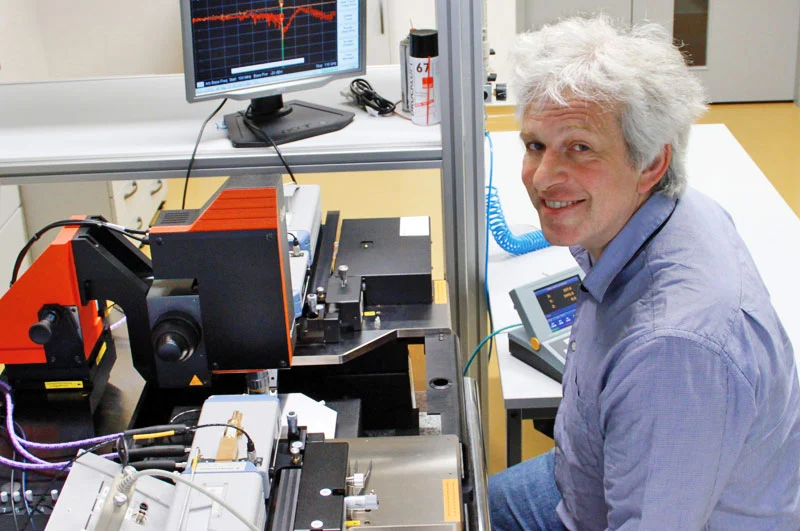A gentle look through
Terahertz rays are good for more than just body scans at airports. FBH is one of the world leading institutes
The terahertz technology will soon be arousing interest for many applications in medicine, radar, communications, security, nondestructive materials testing, and quality assurance. The path that must be taken is being paved e.g. by researchers and their integrated componentry at the Ferdinand-Braun-Institut.
Whenever terahertz technology is mentioned, people think of the notorious “strip scanners” that can see through the clothing of air passengers. But this is a hasty reaction. Viktor Krozer, who holds an enclosed professorship of Terahertz Electronics at the Ferdinand-Braun-Institut, Leibniz-Institut für Höchstfrequenztechnik (FBH), puts it clearly: “That equipment has little to do with THz technology because it works with essentially lower frequencies.”
Many applications
A terahertz (THz) describes a frequency of one trillion vibrations a second. This can dramatically increase the resolution of conventional imaging systems. Yet this radiation can do more than penetrate packaging and clothes. “Imaging systems of this kind can also be used in industrial quality assurance, medical engineering, and broadband wireless communications,” explained Kozer. He continued that as early as the pilot applications THz was being used for nondestructive materials testing, e.g. for detecting fine hairline cracks in pipeline jackets – or damage in the connecting structures of wind turbine and aircraft rotor blades. “These applications are being pushed forward on a massive scale,” explained Krozer.
Pharmaceuticals companies are hoping that high frequency radiation can better control, for instance, the quality of capsule coatings. The food industry can analyse the quality of fresh goods like fish or meat by directing noncontracting THz technology through the walls of packaging.
Think the previously unthinkable
The crucial advantage of terahertz technology: it can penetrate many materials, but the low energy of its photons does not induce ionisation, making it suitable for many applications. Krozer expects initial marketable applications in three to five years. Until then, he and his team will be paving the way and meanwhile are regarded as one of the world leading institutes in this field. Here, they research and develop new integrated terahertz sources and detectors based on semiconductors. Among their achievements, the scientists have developed a unique semiconductor process that can realise complete system components with integrated circuitry. A complex field for absolute specialists with the courage to think the previously unthinkable. “We’re operating at the limits of the feasible,” commented Krozer casually.
By Chris Löwer for Adlershof Special
